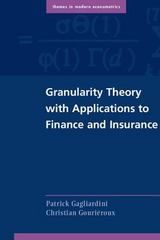Question
Congestion There are 20 potential drivers on a stretch of road. Their willingness to pay for making the journey differs; in fact one has a
Congestion There are 20 potential drivers on a stretch of road. Their willingness to pay for making the journey differs; in fact one has a WTP of 20, one has WTP of 19, one 18 and so on. Drivers incur a 'time cost' of using this road, which depends on how long the journey time is, and this in turn depends on how many drivers in total are using the road. To be precise, suppose the journey time for each driver is 2 minutes if 1 driver is using the road, 3 minutes if there are 2 drivers, 4 if 3, and so on. Suppose that the money value of a minute of time is 1. So if there are 4 users on the road, each will take 5 minutes to complete the journey, and so the cost to each of them will be 5. We ignore other costs of motoring such as petrol etc. Suppose also that the net benet of not using the road is zero.
(a) How many drivers will use the road? Figure it out like this, starting with the driver whose WTP is 20. Will this driver make the journey if they are the only one? WTP is 20, cost is 2, so yes, as the driver gets a surplus. What about both the 20 and the 19 WTP drivers? Cost for each is 3, so yes, they would both use he road. Carry on with this line of reasoning, jumping ahead if you wish, to nd out how many users can be sustained before and additional user gets negative surplus (and so won't make the journey). (b) Suppose now that the last user you identied (the one getting zero net benet) is prohibited to take the journey. What is the total effect on the drivers' surpluses? (c) What if the remaining driver with the smallest WTP is also removed; does this also increase total surplus? (d) What is the efcient number of drivers? (e) How might the drivers be regulated to bring about the efcient outcome?
Step by Step Solution
There are 3 Steps involved in it
Step: 1

Get Instant Access to Expert-Tailored Solutions
See step-by-step solutions with expert insights and AI powered tools for academic success
Step: 2

Step: 3

Ace Your Homework with AI
Get the answers you need in no time with our AI-driven, step-by-step assistance
Get Started


